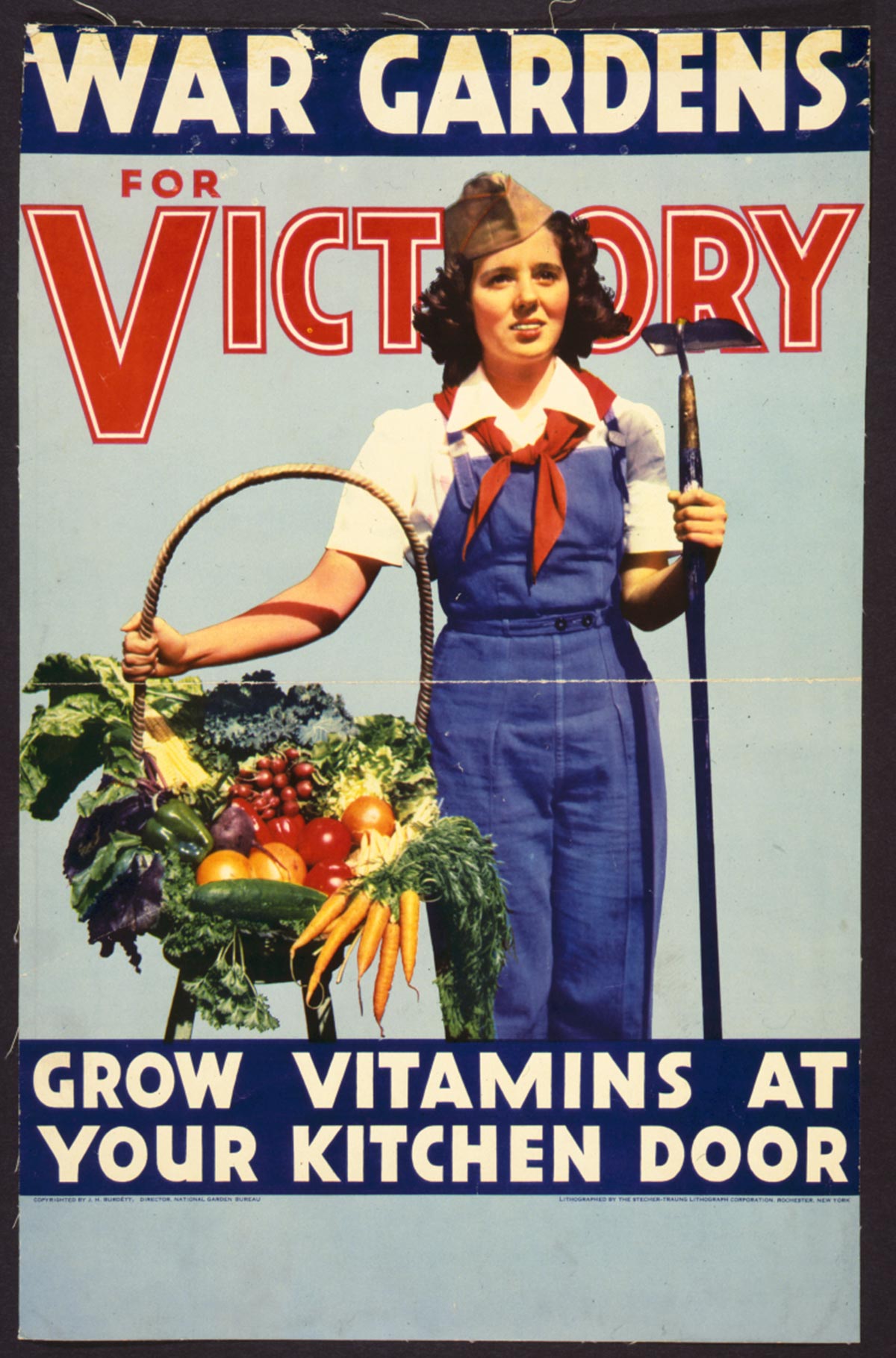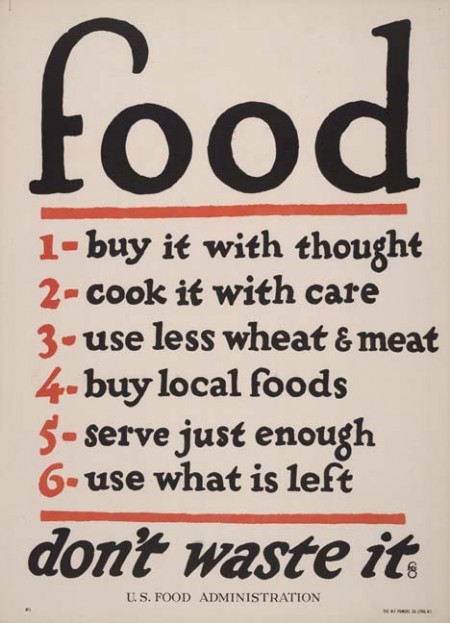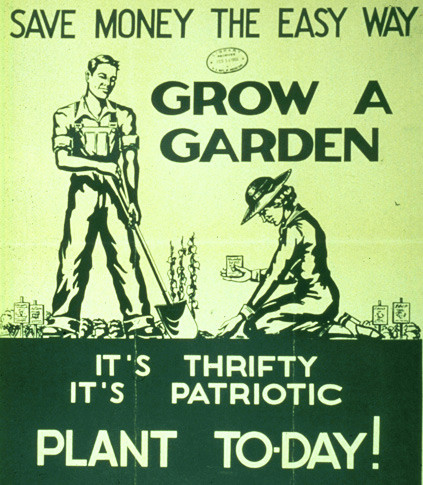Regenerative Citizenship and the Victory Garden
Jessica Cohodes is a Strong Citizen who helped start a Victory Garden Initiative in Milwaukee, WI. Through bottom-up activism and hard work, this movement is changing food access and opportunity for her community.
“Our reasons for generating momentum for a grassroots local food movement were both ecological and economic during a time of scarcity. Many volunteers were un-or-under employed, and had renewed time or necessity to experiment with alternative methods of resource generation.”
In 2009, at the height of the Great Recession and an impending energy crisis, a group of friends and I co-launched our local Victory Garden Initiative (VGI), which would later contribute the winning proposal for the City of Milwaukee’s adoption of Home GR/OWN, a program for (mostly) blighted neighborhoods flipping city-owned vacant lots into pocket parks and profitable food production sites. The VGI’s Memorial Day Blitz began with 8 people and our collective 6 degrees of separation that churned out 100 volunteers installing 40 gardens in yards, schools, churches, and on the roof-tops of businesses - all in just one day.
As citizens, we were making something, not demanding something. It didn’t ‘fit into’ our weekend schedule yet it was a productive way of spending our time, and it was fun to do it together. Seven years later, VGI installs over 500 gardens and 5 orchards every year in Milwaukee, WI, and the City of Milwaukee supports the activity by addressing policy barriers for reconnecting residents to use the land for productive activities over modern ornamental façade.
Our reasons for generating momentum for a grassroots local food movement were both ecological and economic during a time of scarcity. Many volunteers were un-or-under employed, and had renewed time or necessity to experiment with alternative methods of resource generation. We were educated do-gooders saving the world with our shovels and laptops. Yet it likely wasn’t the rationale of eco2-security that might have turned the heads of our local leaders. Quite possibly, it was more the replication of sturdiness that results from the commons producing rather than consuming.
A Victory Garden doesn’t just grow healthy food. A Victory Garden cultivates the awareness of the marginal value between our wasteful yard maintenance practices and the inefficiencies of our global food system. A Victory Garden builds a regenerative foundation for creating surplus through the active responsibility of its citizens' output. A Victory Garden tests and adjusts the resiliency measures on which public policy sits. So we thought it was a poignant place to begin.



The Power of our Yards
During WWI, and WWII, governments in the US, Europe and Australia encouraged citizens to actively participate in creating food surpluses to free up money and military personnel for war efforts. Government campaigns encouraged families to grow and preserve vegetables and fruits, conserve wheat and meat, and add chickens to their backyards for egg production and soil fertilization. By 1943, fruit and vegetables cultivated in residential yards and community plots were estimated to EQUAL the output of commercial production, and "around 1/3 of the vegetables produced by the United States came from Victory Gardens.” Food became accessible through the hands of the many, and citizens were actively engaged, and empowered to steer the outcome of food sovereignty through the freedom to use the land productively.
Today, we feed 7 billion people with the hands of a few by zoning and separating farm land from residential plots, and we groom our unproductive lawns to ornamental perfection. The average homeowner spends 150 hours per year on lawn maintenance, and according to Ted Steinberg, author of American Green: The Obsessive Quest for the Perfect Lawn, “per acre, it costs more to maintain a lawn than it does to grow corn, rice or sugarcane." Ten times more pesticides and herbicides are dumped on residential lawns than are used for agribusiness, and those chemicals are responsible for poisoning the water and wildlife that would otherwise naturally support the biodiversity to feed back into the ecosystem and grow more stuff – by itself, for free. And yet keeping up a neat and tidy lawn is what's expected of a "good" citizen in many communities.
The food grown of wartime victory gardens was ‘fighting’ food. The food grown in today’s victory gardens is ‘power’ food. The fragile global supply chain sends food on a dream vacation around the world before it gets to your plate. “The modern food system consumes roughly ten calories of fossil fuel energy for every calorie of food energy produced,” calculates Richard Heinberg, Post Carbon Institute Fellow. So the apple you just ate for lunch was conceivably grown in Chile 9 months ago, flown to the UK for waxing, shipped to regional cold storage centers, railed to a distribution center, and trucked to the grocer where you plunked about 10 into an oil-produced plastic bag for $1.49/lb.
Food security sits heavily atop a point loaded dinner table, where prayers of grace bid for oil prices to stay low, or that a Middle East fuel war won’t force us to have to farm our own ‘fighting’ garden. How much more relief would we get if we used that 150 hours this year to plant apple seeds for food victory?
The Power of our Expectations
In just 70 short years since wartime, the way in which we as citizens view our rights, responsibilities and duties for maintaining our shared resources has shifted dramatically. It is illustrated in how we maintain our lawns. It is powerfully clear when we begin to explore our own expectations of our neighbors’ property and its perceived taxable value.
What is my role, as a citizen, in creating value for myself and my neighbors? Is it a manicured, energy-intensive lawn, which requires hours of toxic maintenance to ensure modern aesthetic value? Or is my role as a citizen, to the whole of my community something that can be measured by the inherent productivity of the land? In this way, the evolution of citizenship is neatly nestled within the value derived by a visible garden in your front yard. It’s a victory for both food and for a prosperous democracy.
Citizenship, at its root core, is the active responsibility of the individual to participate in upholding the contracts of nature and the commons. The role of the citizen has devolved since colonial times from active political participation, to the receipt of a library of passive legal rights and privileges. Here on American soils, Indigenous American’s Toghestiy and Mel Bazil explain that Indigenous people “don’t have a word for rights. We have words for responsibility.” Responsibility is what lifts us from the oppressive veil that rights otherwise buries the commons under. And lifting that veil requires the active participation of the broad assembly.
So in 2008 when a friend passed out the Transition Handbook to 20 other friends as a holiday gift, the following bullet points we mutually read within it was a call to collective action:
• if we wait for the governments, it'll be too little, too late;
• if we act as individuals, it'll be too little;
• but if we act as communities, it might just be enough, just in time.
We were going to blitz the city in Victory Gardens, Memorial Day weekend, to start the conversation. A front-yard garden is a simple victory for food sovereignty, we said. And 8 years later, I am witnessing the evidence of the collective commons’ power to reach tipping points within municipalities by bottom-up, engaged action. This is a story of shift. How democracy becomes a regenerative, closed-loop system.
Regenerative Citizenship
Ground-up action creates a regenerative feedback balance. A garden starts conversations - leading to projects - further shifting policy that serves the needs of the load bearing system to get the work done. Civic action connects like-minded individuals into groups, which now become separated by just 1 degree rather than 5-6 degrees. These groups have the power to evolve the conversation, experiment, iterate, produce, and iterate again. If the group is large enough, it warrants representation, and if the idea is good enough, it’s worthy of top-down support.
Here is an ever evolving timeline of local food actions in Milwaukee since the original grassroots Victory Garden Blitz year. The scope is limited to make a quick point, as there were dozens of other simultaneous activities propelling the local food movement at that time. The point - is that all these groups were connecting. Doing something together rather than demanding something together provides a space for conversation rather than rebuttal:
- 2009: Transition Milwaukee launched VGI and scattered the seeds of food-sense across the local press.
- 2011: Hen and bee keeping were (re)established as legal activities on urban plots.
- 2012: Mayor Tom Barrett called his City’s collective brain power to an Urban Agriculture Tournavision – where VGI’s proposal was voted the winning bid. HOME GR/OWN spun from that thread, which placed 6th out of 305 nationally competing cities in the Bloomberg Mayor’s Challenge.
- 2013: The City’s HOME GR/OWN initiative picked up speed.
- 2014: Transition Milwaukee held a Food Forest Forum, where representatives from residential urban farmers and the HOME GR/OWN initiative came together to talk about long-term production and the policies.
“Through urban farming’s experimentation and feedback, the program has made adjustments in ordinances such as the allowance to build accessory structures like hoop houses and sheds on abandoned lots that were otherwise restricted. ”
Milwaukee’s public-municipal urban farming conversation has progressively become more sophisticated. It’s evolved from the propagation of yard gardens, to the seeding of long-term urban orchards, to the merits of productive vs. ornamental trees on medians and the benefits of pocket park food forests. HOME GR/OWN works with established organizations and businesses, who then work with residents.
Through urban farming’s experimentation and feedback, the program has made adjustments in ordinances such as the allowance to build accessory structures like hoop houses and sheds on abandoned lots that were otherwise restricted. It’s lead to the formation of a hub of processes and resources to obtain land and permits for urban agriculture activities. It educates about safety issues involving fruit-fall from trees on streets (windshields and ankle liabilities), or crime potential in reduced-visibility pocket parks. The program has slowly connected the bits and pieces of the local food movement in Milwaukee into something that supports the bottom-up activities.
During war time, governments were begging their civilians to use any and all available land to grow food for a united cause. The land’s limits were endless, the citizen’s contribution encouraged, and the output of food a significant chunk of the surplus. It was top-down, bottom-up buy-in. Today, some citizens are begging their governments to allow them to use any and all available land to grow food for many causes. The land’s limits are in reality, endless. However, society’s self-inflicted expectations of outdoor tidiness have, over the past 70 years, cornered each other, and subsequently our governments to create a limiting set of rules and restrictions about how to use the land productively - further discouraging the commons’ contribution in creating surplus in any capacity.
Just as the ‘war’ gardens of yesterday cultivated a sturdy base for food sovereignty, the ‘power’ gardens of today represent the deepening civic awareness that active citizenship is a muscle to shape, and build. It’s a power that will lift veils, and make our set of rights and privileges a set of responsibilities for feeding democracy, indefinitely. A victory for the commons.
(All photos courtesy of Jessica Cohodes)
Related stories
About the Author
Jessica Cohodes is the President and co-founder of Transition Milwaukee, a 100% volunteer grassroots chapter of an international movement for local resiliency. She applies her professional communications experience to transform culture’s scarcity-driven dialogue into attainable human-scaled actions that generate abundance and wellbeing at the local level. Jessica holds a BA in Journalism from the University of Wisconsin-Madison, and in 2015 completed a Masters Fellowship in Sustainability Leadership from Edgewood College. She thrives with her husband and three children in a cream city brick home, in the heart of Milwaukee, WI.






